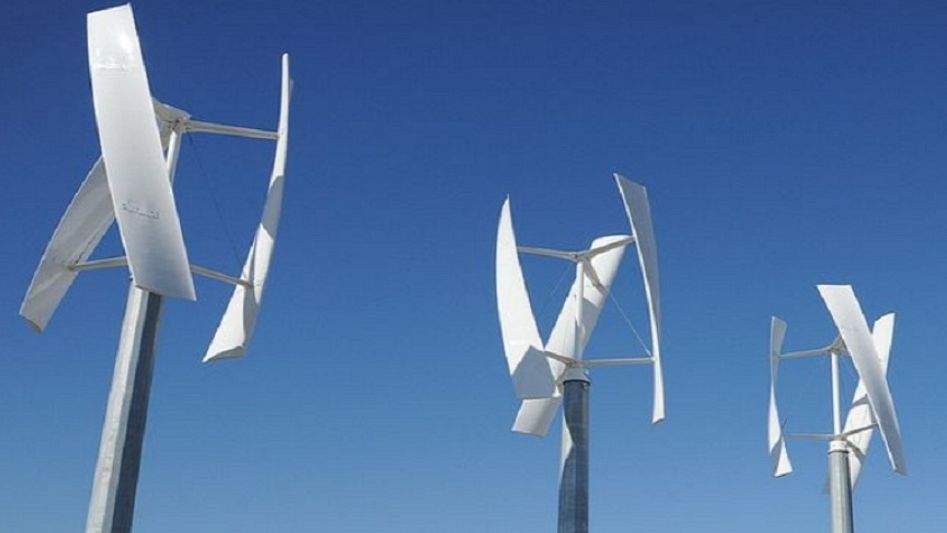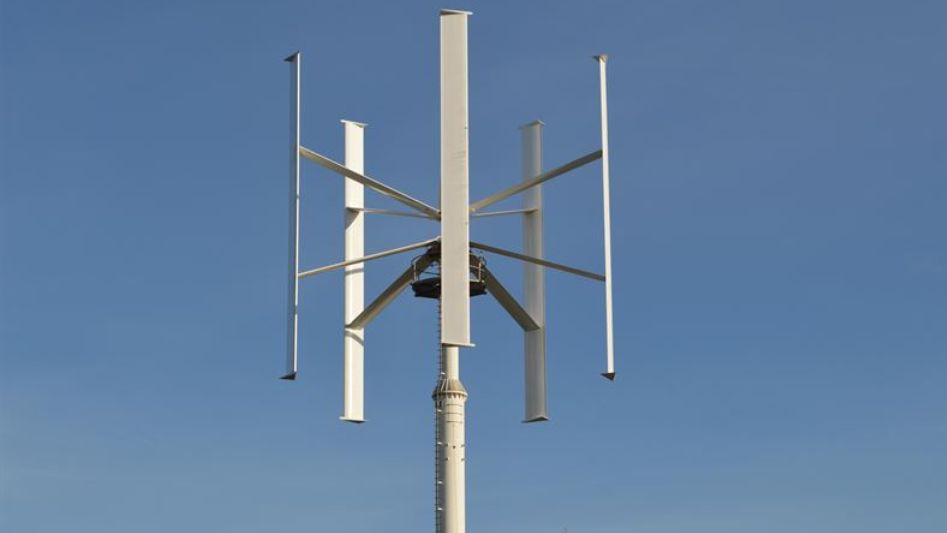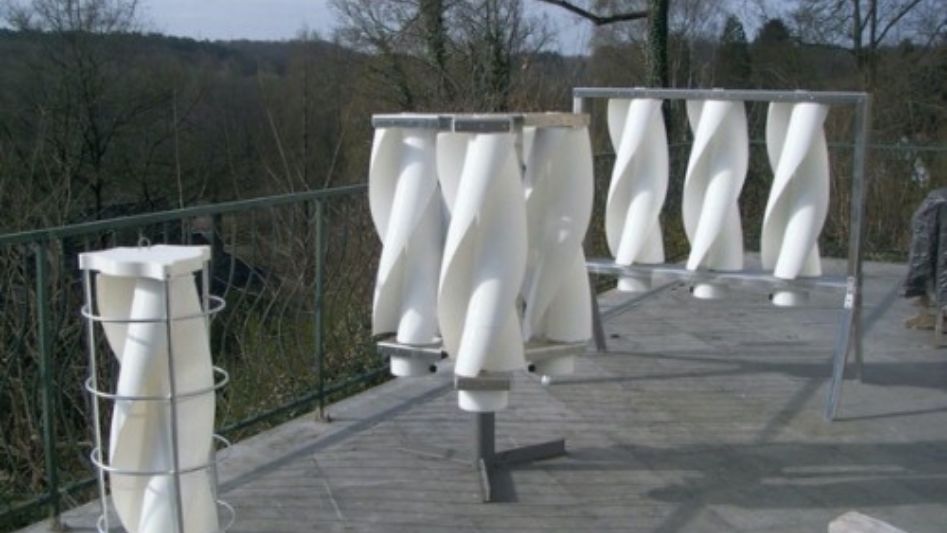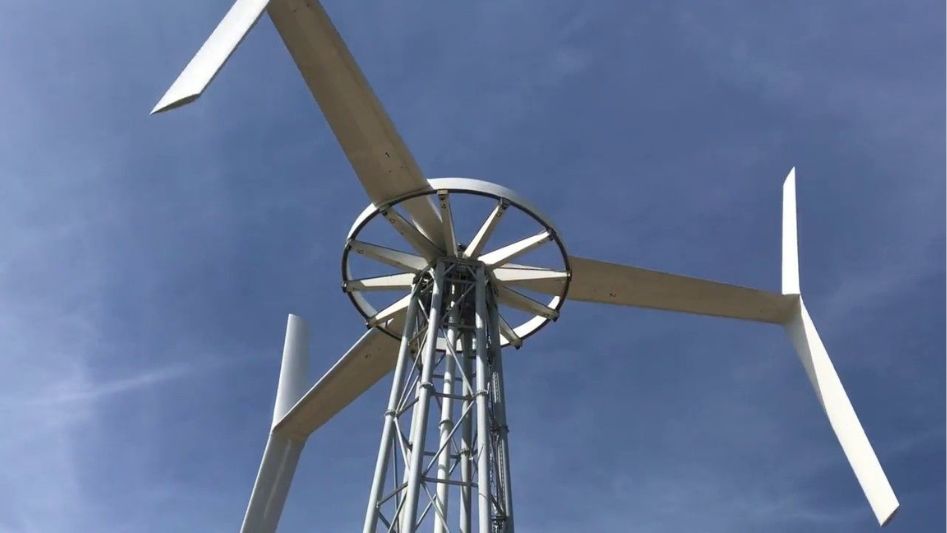Wind power is a kind of electrical energy generating that has been successfully used in commercial settings and is seeing tremendous growth. Wind turbines are fast becoming a significant renewable energy source, second only to solar (or sunlight) energy in importance. Wind turbines provide clean, renewable, and cost-effective power all over the globe. The axis of orientation of a wind turbine is the standard method for classifying different types of wind turbines. In its configuration as a Horizontal Axis Wind Turbine (HAWT) or in its configuration as a Vertical Axis Wind Turbine (VAWT).
Wind turbines with a horizontal axis and three blades are quite common since the design has been tested extensively and has a long history of refining and improving. HAWTs are used to a considerable extent in huge wind farm arrays spread throughout the countryside and in open offshore projects where the flow of the wind is cleaner, stronger, and undisturbed.
Nevertheless, the pattern and flow of the wind surrounding cities and metropolitan regions are less predictable, more turbulent, and full of turbulence as a result of high-rise buildings, trees, and massive artificial objects. Because of this, the efficiency of big horizontal aerofoil wind turbine designs is reduced in urban and semi-urban locations.
Vertical Axis Wind Turbine Design

Vertical Axis Wind Turbines, often known as VAWTs for short, are more desirable and better suited for usage in cities and urban situations where the wind flow is less predictable. This makes VAWTs an increasingly popular choice. Because of this, VAWTs are a much better option for both on-ground installation and/or mounting onto buildings and roofs, both of which would normally hinder the installation of taller horizontal turbine constructions. Both of these installation options are available for VAWTs.
This form of wind turbine generator is also omnidirectional, which means that it does not need the blades to be oriented towards the direction from where the wind is blowing, even though this is something that wind turbines are always designed to accomplish. If this is the case, there is no need for convoluted yawning or tail-fin rules for VAWTs since they are designed always to face the right way.
Because of its low-friction vertical blade design, vertical axis turbines can generate power even in the presence of obstacles like buildings and infrastructure, regardless of the wind’s characteristics or direction. Another benefit of vertical axis wind turbines is that they may be positioned near the place of usage, decreasing the burden on any existing grid infrastructure. This helps promote sustainability while minimizing any environmental problems that may arise.
Vertical Axis Wind Turbine Designs
Energy may be thought of as a river or a flow of wind that moves through the surroundings. The kind of wind turbine, its design, and the position at which it is situated all significantly impact the amount of power that can be harnessed from the wind. Horizontal wind turbines get its power from the incoming wind by employing their rotor blades to make the wind blow more slowly. To achieve a level of effectiveness equal to one hundred percent in this endeavor, the rotor blades would have to deflect one hundred percent of the wind, which is obviously not achievable.
Wind turbines with a vertical axis are an innovative kind of power generation technology that has been developed for a more specialized urban niche market. Because they are far lower in height than conventional horizontal wind turbines, vertical axis wind turbines, or VAWTs, would generally have a relatively modest effect both visually and environmentally surrounding buildings. Additionally, the primary working components of these vehicles, including the generator and gearbox, are positioned lower to the ground, reducing the required structural support. Because of this, the examination, maintenance, and repair of these turbine generators is made to be very simple.
Wind turbines with vertical axes may take many forms, each of which revolves around an axis perpendicular to the wind’s direction. Designs featuring rotating vanes, cups, or eggbeaters are now quite commonly available, and each of these options has its own benefits and drawbacks.
In the beginning, constructions with a vertical axis turbine were used for pumping water and agricultural irrigation in distant areas where the wind was blowing from any direction and at a low speed. The design of VAWTs may be broken down into two primary categories: Savonius (drag-driven) and Darrieus (lift-driven) designs. Today, VAWTs are an effective option for usage in built-up regions where the wind is unreliable.
Savonius Wind Turbine Design
The Savonius wind turbine design is an easy-to-understand design that is based on the concept of “differential drag.” This design was named after its Finnish designer. The Savonius rotor is constructed using two semi-cylindrical aerofoils, also known as half-cylinders or cups, which are positioned offset from one another around a vertical shaft in an analogous manner to the design of wind speed anemometers.
In general, Savonius designs consist of two or three cups, bowls per section, or two half semi-cylinders facing in opposing directions to the wind so that they create a type of “S”-shape design connected to a vertical shaft. Alternatively, Savonius designs may also consist of a single cup or bowl attached to a vertical shaft. This indicates that it can only spin in the direction that is shown on the screen.
Types of Savonius Turbine Rotor Design

The wind is channeled by Savonius turbines such that it flows from the rear of the concave side of the cups or cylinders on one side into the interior of the convex side of the cups on the other side. The movement and rotation around the connected vertical shaft are the effects of the wind being directed between the cups or semi-cylinders.
The Savonius turbines function according to the principle of drag, which states that the cups will have less drag when spinning in the same direction as the wind and will have greater drag when revolving in the opposite direction of the wind. This impact of diverse forces is amplified by the flow of wind and air between the two (or three) cups, which, in turn, amplifies the driving torque of the shaft, which may then be put to use in the production of electricity or the pumping of water.
However, due to the fact that they solely operate on the principle of drag, they are often less efficient than other designs of VAWTs. In fact, only around 25 to 30 percent of the power that is potentially available from the wind can be efficiently harvested.
The simplicity with which it may be rotated is the primary benefit offered by the Savonius rotor design. Because of its naturally low cut-in wind speed and low tip-speed ratio, it is able to harvest energy from any wind that is not blowing in a particular direction. As a result, it is well suited for use in a wide variety of urban settings, which often have moderate wind speeds and changeable wind directions.
Wind turbines with a Savonius rotor and a vertical axis are simple machines that need little in the way of upkeep and are best suited for applications that don’t call for significant amounts of power output. The two sides of an oil drum have been used to create homemade Savonius rotor designs, which have then been used for simple off-grid water pumping applications. However, the most typical usage for a Savonius rotor is in wind speed anemometers, which are instruments that determine how fast the wind is blowing.
Darrieus Wind Turbine Design
The Darrieus wind turbine rotor, named after its Finnish designer, consists of two or three thin aerofoil blades or vanes installed onto a vertical shaft to provide the appearance of vertical blades or an egg-beater-shaped design. In contrast to the Savonius rotor, the aerofoil-shaped blades of this rotor’s rotor are arranged horizontally around the central shaft, which results in superior aerodynamic performance and a far less complicated construction. Within its design framework, the rotor may have two, three, or even more blades that are either straight, curved, or shaped like an aerofoil. The configuration of two straight blades is frequently referred to as an H-blade arrangement.
Types of Darrieus Turbine Rotor Design
The Darrieus rotor operates according to the principle of lift forces (in a manner that is analogous to that of the horizontal aerofoil rotor), and it generates the greatest amount of driving torque when its shaped blades are moving against the wind at a speed that is greater than the speed of the wind. In contrast to the Savonius rotor, this indicates that they are capable of extracting a greater amount of useable energy from the wind per unit of swept area.
It travels in a circular path through the air while rotating, and as it does so, each blade generates a small lifting force, which, in turn, results in a positive torque for the rotor. This phenomenon is analogous to the aerodynamic forces that act on an airplane wing; the greater the lifting force, the greater the rotation. Some tangential force transfers mechanical power to the center shaft, which then distributes that power to the electrical generator located below.
A pure Darrieus rotor, in contrast to the Savonius rotor that came before it, is not a self-starting machine and thus needs some kind of external mechanism to get it rolling at the beginning. To put it another way, the rotor has to start turning before the wind can act as a driving force on it. In most cases, a tiny Savonius rotor is placed onto the main Darrieus shaft in order to produce the necessary beginning torque at low speeds. This is done in order to maximize efficiency.
When it is operational, the Darrieus rotor design can revolve at a relatively high tip speed, resulting in a greater production of power than the Savonius rotor design. Some high-end commercial vertical wind turbine blade designs have hinges that allow for variable tilt angles. When the blades are rotating at high speeds, the hinges move position due to centrifugal forces, which slows down the rotational speed. This eliminates the risk of the blades overspeeding and causes the turbine to break.
Vertical Axis Wind Turbine Summary

Wind turbines are devices that can either transform wind’s kinetic energy into electricity or pump water. Although the expansion and acceptability of wind turbines in urban applications is still relatively restricted, vertical axis wind turbines (VAWTs) offer significant benefits over their bigger horizontal axis relatives in urban settings. They may produce energy locally for use in applications that are not connected to a grid, reducing greenhouse gas emissions from power plants and assisting in promoting sustainable development in the surrounding community.
Vertical Axis Wind Turbines, which may have rotor designs based on Savonius or Darrieus, are an excellent option for cities and other urban regions with low wind speeds and a variable wind pattern. Because of its slower rotational speed, the Savonius wind turbine is an excellent choice for use in pumping water. Because of its faster rotational speed, the Darrieus wind turbine is more suited for electricity production. However, Darrieus’ rotors do not possess their own self-starting mechanisms.
As a direct consequence of this, hybrid Darrieus-Savonius rotors are now on the market. These rotors are able to extract more kinetic energy from situations with low or variable wind speeds, making them suitable for usage in urban settings. The NINILADY 300w Vertical Axis Wind Turbine is an example of one design for a hybrid Vertical Axis Wind Turbine (VAWT), and it comprises of an S-type Savonius rotor with three airfoil blades creating a Darrieus rotor to achieve the highest possible level of performance. It has a relatively low cut-in wind speed of 1.3 meters per second, allowing it to produce power and attain a rated output capacity of 300 watts at 10 meters per second.

